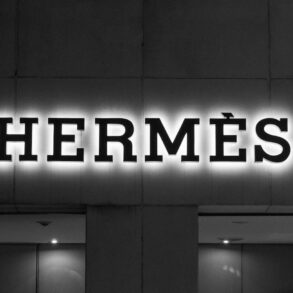In an age of It-bags and Instagram trends, Hita Tolia loves carrying her wine-red leather tote from the Italian luxury fashion brand Tod’s. But you would not find this bag in a store. It comes with its own twist. The bag, a keepsake inherited from her mother, has a striking, custom design—a handpainted phoenix rising from tangerine and yellow flames.
“It was my first luxury bag that I got hand-painted after meeting the artist, Maleka Shah, at an exhibition and liking her work,” says Tolia, 64, who runs a family business in Mumbai. Her collection of personalised luxury pieces include a tan Bottega Veneta tote adorned with a hand-painted dragon and a once-tarnished Yves Saint Laurent bag reinvented with Chinese mosaic hand-painting.
“When I carry a bag, it has to show my personality and it should be one of a kind,” says Tolia, embodying a growing movement among luxury consumers who are transforming their highend accessories into personalised works of art, reflecting a desire to move beyond mere brand ownership to express individual style or restoring them rather than simply replacing them with the latest trends. This sustainability-conscious approach has gained momentum since the pandemic.
While upgrading heirlooms isn’t new, India’s expanding luxury market— which is forecast to grow 3.5 times its current size to $85-90 billion by 2030, according to a Bain & Company report— has spawned an ecosystem of specialised services catering to the maintenance and customisation of luxury goods.
NOTHING IS LAST SEASON
Mumbai-based artist Shah has carved out a niche in this market with her brand, The Wander Ink. She started hand-painting luxury accessories in 2019, transforming everything from sneakers to high-end handbags, including working with Hermès. Her clients trust her with their prized possessions—from Chanel to Dior bags worth several lakhs of rupees—for customisation work, which ranges from Rs 8,000 to Rs 45,000. “Most of these bags are in beautiful condition,” says Shah, “but clients want to refresh them rather than retire them.” Her clientele bring both new purchases that they want to make one of a kind and cherished vintage pieces they are bored with. Sometimes, they bring bags that they hold on to because of sentimental value. Shah says there is growing demand from non-metro cities like Chandigarh and Jaipur as well.

This trend has created opportunities for entrepreneurs like Delhi-based couple Sahil and Arunima Jain. After a disappointing experience with a local drycleaner, they launched Sneakinn Laundry in 2020, a specialised restoration and cleaning service for luxury accessories. “I was seeing a rise in disposable income and people investing in luxury shoes and handbags, and I saw a huge gap in terms of service catering to this clientele,” says Sahil, 28. The company, which offers restoration and cleaning services and DIY kits, has served 18,000 clients and had a five-fold growth in three years. “Once a client’s leather handbag was damaged, so we sourced the specific material from a tannery,” says Sahil.Another Delhi-based luxury accessories restoration and repurposing service, The Leather Laundry, has survived a pandemic-era slump to register a double-digit growth. Says founder Mallika Sharma: “Upcycling offers a smart and environment-friendly alternative to constant consumption, and people are embracing it as a wise and responsible choice. This shift is fuelling tremendous growth in the segment, with more individuals acknowledging that restoring and repurposing luxury items is not only eco-conscious but also a sophisticated and meaningful decision.”
Established brands are latching on to the luxury buyers’ desire to modernise heirlooms. This week, designer Amit Aggarwal, known for his sculptural silhouettes and distinctive designs, launched Banarsi Edit—a collection of vintage Banarasi saris transformed into contemporary creations. In a first for the brand, clients can bring their own Banarasi saris for customisation. The pieces in the collection retail between Rs 2.5 lakh and Rs 4.5 lakh.

“The taboo around wearing something previously owned is gradually fading, especially among the younger generation who are less bound by traditional notions,” says Aggarwal, who has launched pre-loved collections earlier as well. “Today’s audience is far more open and vocal about their choices, often opting for pieces that reflect their personality and align with their broader beliefs. This shift marks a pivotal moment where people are unapologetic about their decisions, embracing experimentation and self-expression without hesitation.” A piece from the pre-loved collection was recently worn by actor Kareena Kapoor Khan.
Jewellery brands are also seeing a rise in demand to modernise heirloom jewellery. Delhi-based luxury jewellery house Rose and Ahmedabad-based Aurus have noted a growing trend among brides who want to turn heirloom pieces into contemporary designs. Puja Shah, who owns Aurus, says, “This fusion of tradition and modernity reflects a deep desire among brides to honour their heritage while embracing a personalised, stylish look.” Recently, Aurus supplied trinkets for Isha Ambani’s blouse, incorporating her own heirloom jewellery, for a pre-wedding function of her brother Anant Ambani.
Purnima Sheth, founder of Rose, calls it “the button box theory”—whatever you don’t want to wear, you put it in a box, and repurpose. “Since Covid, people are increasingly realising the value of what they own, including jewellery. They come in to discuss how to make it more meaningful and lasting,” says Sheth, adding she had a client from a business family in Delhi who completely transformed her bridal jewellery, repurposing heirloom pieces valued at approximately `1 crore. However, she points out that repurposing jewellery accounts for only a small portion of her overall business, maybe 5-10%.
Mumbai-based luxury consultant Deepika Gehani says, 10 years ago, she had to take her damaged Jimmy Choo shoes or Gucci bags to London to get them repaired. India has come a long way since then. “India has two types of luxury buyers—those who invest in a classic Hermes or Chanel and the young er buyers who go for a Jacquemus. And both are interested in upcycling and restoring their bags.”
This post was originally published on this site be sure to check out more of their content.






